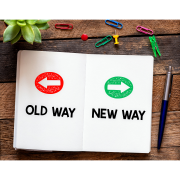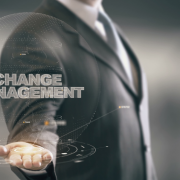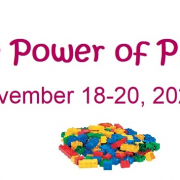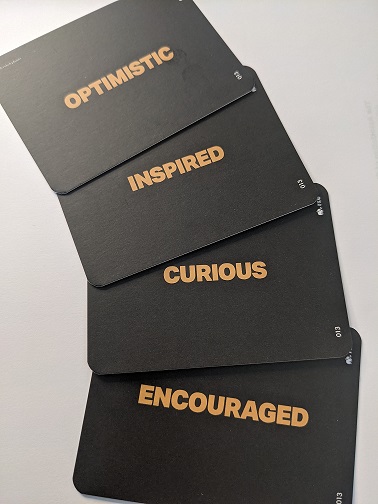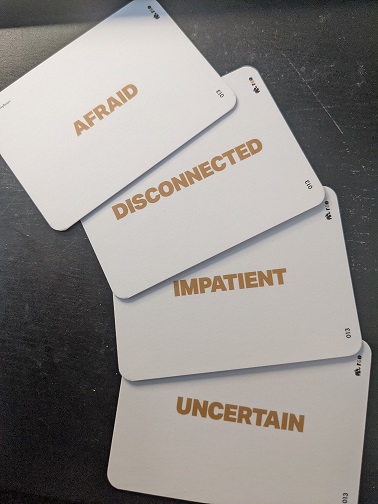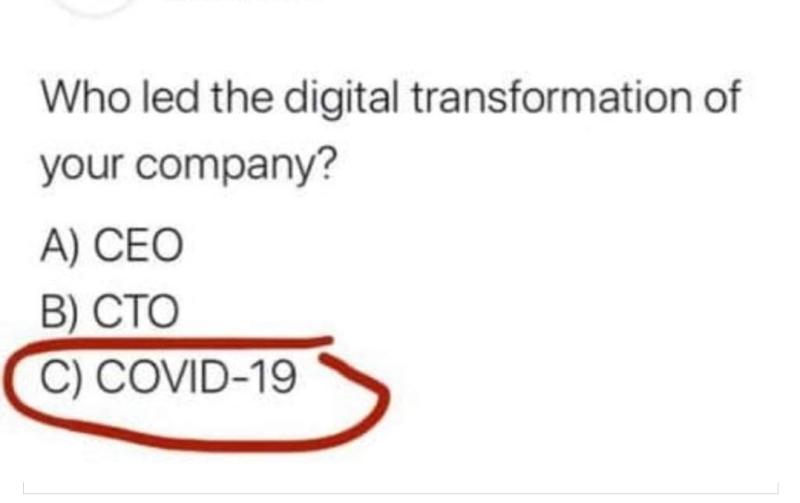Want to know a secret?
Change doesn’t need to be as challenging as it seems. We make it a lot harder by letting the “Double Whammy” get in the way.
Let’s begin with a story
Last week I was deeply involved in one of my guilty pleasures: a British serial that follows the everyday lives of the hardworking men and women living in Manchester. I greatly respect the writers who, over the years, have created storylines about things we “just don’t talk about” in polite society. They’ve always treated challenging topics realistically, sensibly, and sensitively. However, that day I found myself yelling “AW, COME ON!! SERIOUSLY?!” at the screen in disbelief.
Picture this: a stoic, middle-aged man, Dev, enters the local pub. His neighbours ask him about a recent positive change in his life. He is noticeably distressed by their questions and joins his friend Tim in a booth. Tim asks Dev about the happy change too. Mystifyingly, Dev is overcome and begins weeping. Startled, Tim leans back in disgust. He gets up, moves to the bar, and shares with another man that Dev is “very emotional”. They both turn to look at Dev, who is quite distraught, turn back to each other in horror, pause, and then promptly change the subject to something else, football I think. Dev is left alone, in distress, to process the change, while the other pub patrons avoid him like the plague.
C’mon! In 2024, are we really still perpetuating the myth that boys don’t cry?
Enter the Double Whammy
Many changes cause stress. The Double Whammy is the extra layer of stress we add to the experience because of the stigma related to strong emotions and other normal responses to change.
I haven’t watched since that night so I still have no idea why Dev was so upset about a change that I thought was pretty positive too. The fact is, it doesn’t matter why he was upset. The pertinent information is that he was upset. His strong emotional reaction made his friends uncomfortable so they negatively judged his response, and isolated him. Poor Dev!
Dealing with new processes, relationships, environments, and situations is hard enough. Wouldn’t it be easier if we were free to navigate challenging changes without having to stress about whether our response to it is socially acceptable? Our “stiff upper lip” society and toxically positive culture have made change so much more challenging by stigmatizing normal emotional and physiological responses. This creates a massive barrier to transitioning quickly, healthily, and effectively.
5 Tips for Avoiding the Double Whammy:
1. Know what your brain does on change
Your brain LOVES predictability but change always begins with an ending of the previous state. That causes a loss of predictability. When that happens your brain triggers the threat response and sends you very clear and very uncomfortable signals that you might be in danger. Sadness, fear, anxiousness, feeling overwhelmed, and frustration, etc, are all examples of these signals.
2. Know that it’s not you, it’s your brain doing its job
Your brain evolved to keep you safe, alive, and part of a social group. When change triggers a threat response (and not every change will), you may consciously know that there’s no saber-tooth tiger behind that tree, but your brain doesn’t know that. It’s a piece of equipment, just like your bladder or stomach. You learned their signals very early on and know exactly what to do when your bladder tells you it needs something. When predictability is lost, your brain will also let you know with crystal-clear signals that you might be in danger. A triggered threat response doesn’t mean a person is weak, unstable, or dramatic. It does mean that their brain is doing a good job at keeping its owner safe.
3. Don’t suppress or ignore your brain’s signals
Threat response signals are uncomfortable on purpose. They’re designed to get your attention. They’re also 100% NORMAL. Sadness, fear, anxiousness, feeling overwhelmed and frustration, etc, are all normal signals that your brain has detected a loss of predictability. Ignoring these signals could compromise your health, well-being, and relationships. Notice when your brain is trying to get your attention. Learn to name what you’re feeling and the purpose of the emotion. If you’re on the receiving end, like Dev’s friend Tim, know that strong emotions are normal after change and get comfortable with them. Normalizing strong emotions helps destigmatize them.
4. Have the courage to go rogue
Beliefs about how we “should” behave after change go directly against our nature as human animals. Gender socialization, toxic positivity, culture, and values around our roles and responsibilities all try to tell us to ignore our emotions and behave as if nothing is bothering us. It takes courage to say, “hey, I know this change is a positive one overall, but I still feel a sense of loss (or sadness or anger etc.).” Take a risk, push back on your socialization and choose to support your overall health and well-being instead.
5. Know your Change Fingerprint©
1000 people could go through the same change and each brain will respond differently. You could say that everyone has a unique Change Fingerprint©. Discovering yours, and knowing that everyone else has one too, goes a long way in combatting the Double Whammy. Furthermore, organizations that have introduced the Change Fingerprint Framework© discovered that the process increased trust, psychological safety, employee engagement and change resilience. As a result, change implementations became easier, less stressful, and less costly.
Poor Dev. I wonder why he was so upset about his very amicable partner being released from prison? I wonder if the writers did eventually go rogue? Did Dev’s friends eventually act against their gender socialization to support him, instead of being awkward around his tears? I guess I’ll have to tune in again soon to find out.








